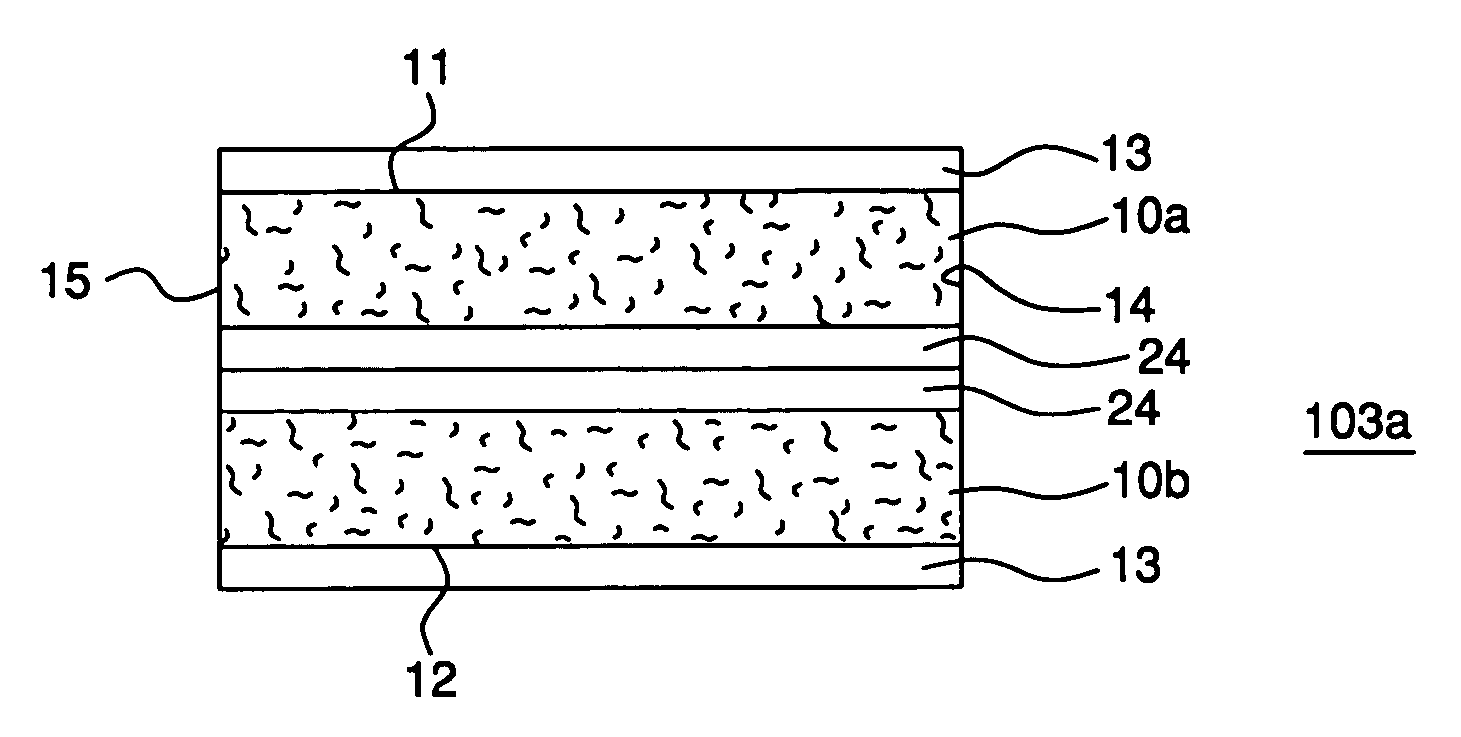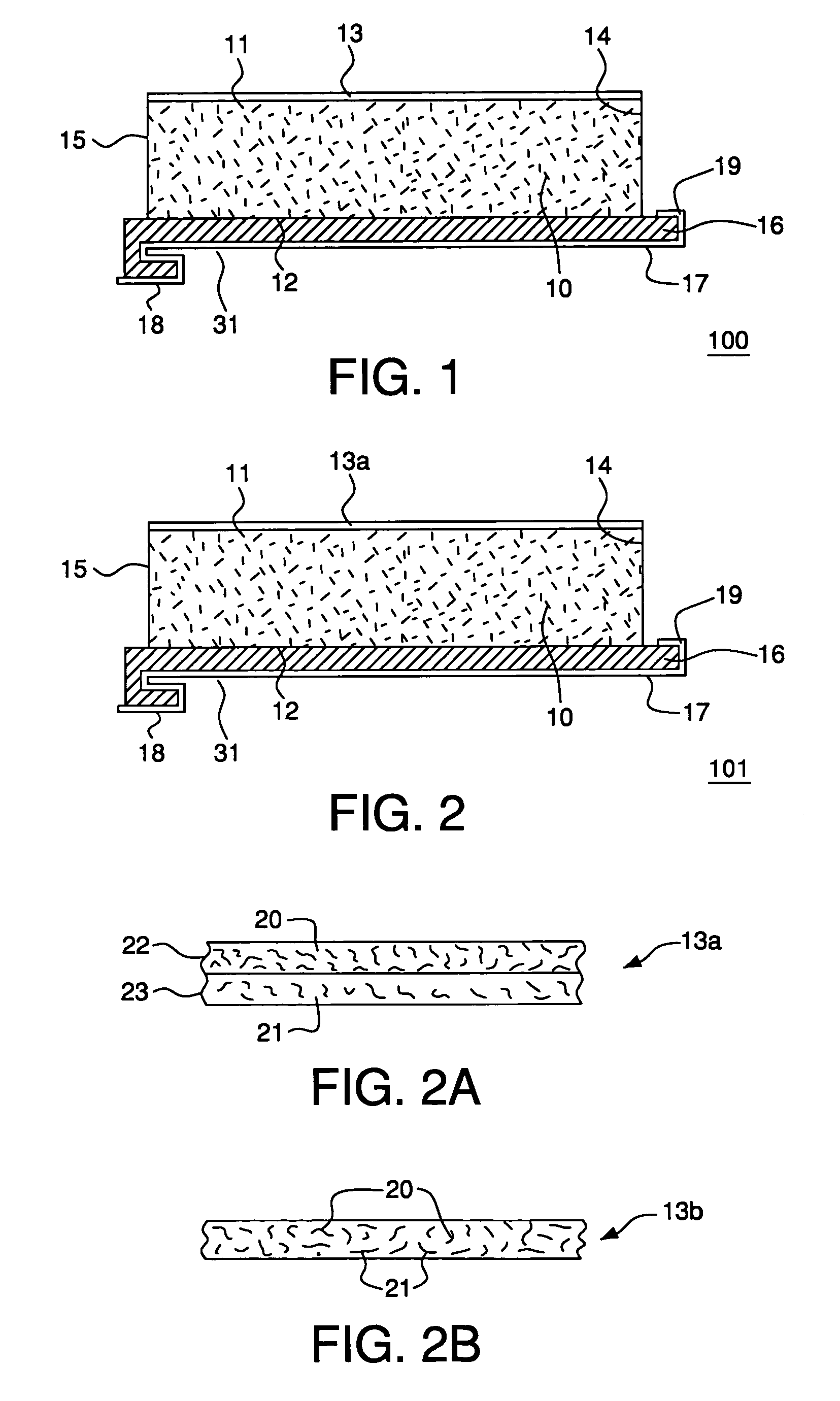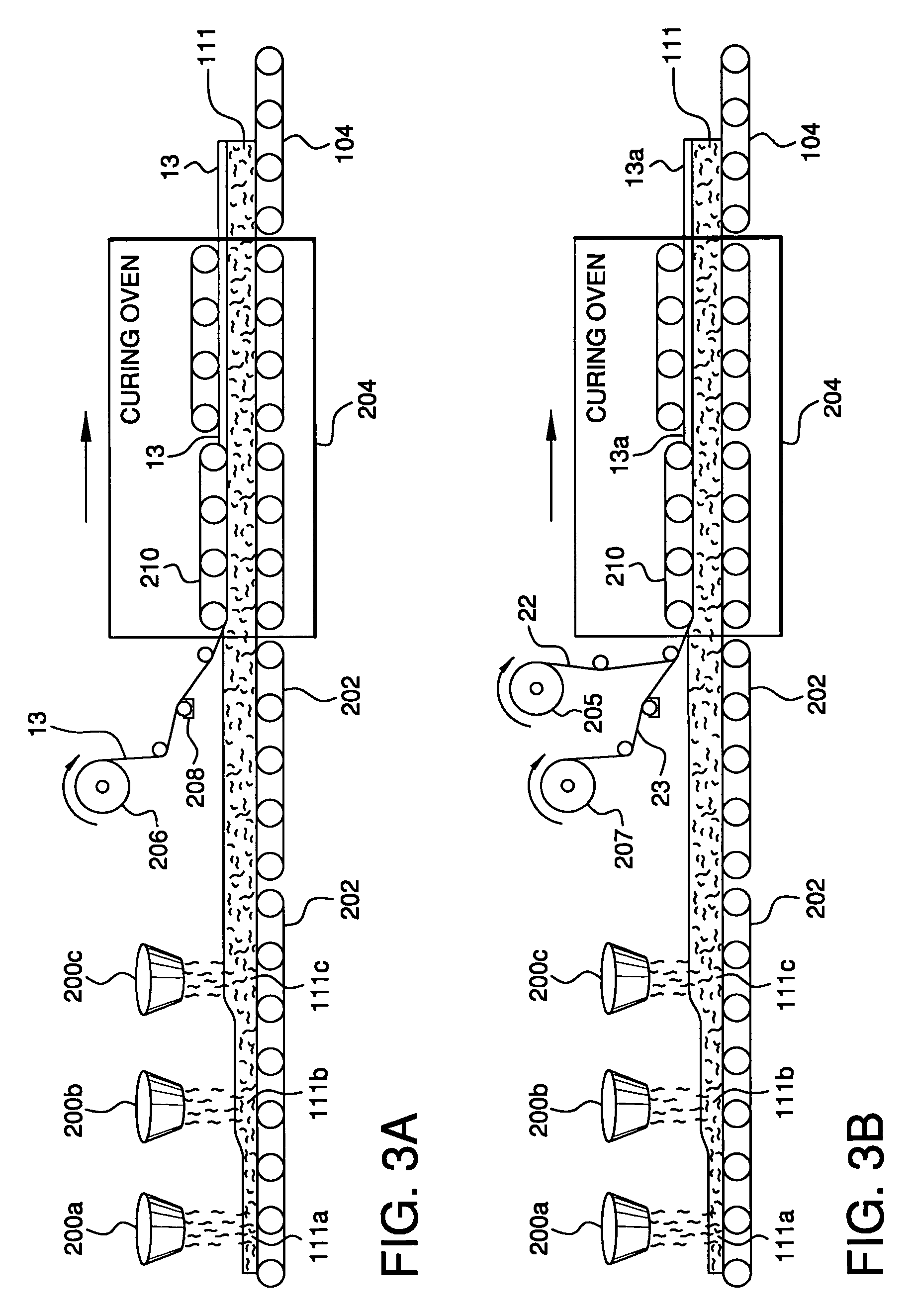Reinforced fibrous insulation product and method of reinforcing same
a technology of reinforced fibrous insulation and fibers, which is applied in heat-proofing, natural mineral layered products, weaving and other directions, can solve the problems of affecting the quality of finished products, affecting the tensile strength of finished products, so as to improve the tensile strength and rigidity of finished products, the effect of facilitating cutting
- Summary
- Abstract
- Description
- Claims
- Application Information
AI Technical Summary
Benefits of technology
Problems solved by technology
Method used
Image
Examples
Embodiment Construction
[0021]Provided herein are methods for making low density insulation products and the low density insulation products made thereby. Insulation materials generally span the range from light weight, flexible and resiliently compressible foams and nonwoven fiber webs to rigid or semi-rigid boards. Generally, these insulating materials have densities in the range of about 0.5-7 lb / ft3 (8-112 kg / m3). Foam and nonwoven fiber web materials are usually provided in continuous sheeting that is sometimes cut to preselected lengths, thus forming batts. These articles usually are “low density,” in the range of about 0.5-6 lb / ft3 (8-96 kg / m3), and preferably about 1-4 lb / ft3 (16-64 kg / m3), and more preferably 0.3 to 1.5 lb / ft3 (4.8-24 kg / m3). The thickness of the insulation blanket or mat is generally proportional to the insulated effectiveness or “R-value” of the insulation. These low density insulation mats typically have a thickness between about 3.5-10 inches.
[0022]In contrast, rigid to semi-r...
PUM
| Property | Measurement | Unit |
|---|---|---|
| temperature | aaaaa | aaaaa |
| density | aaaaa | aaaaa |
| thickness | aaaaa | aaaaa |
Abstract
Description
Claims
Application Information
 Login to View More
Login to View More - R&D
- Intellectual Property
- Life Sciences
- Materials
- Tech Scout
- Unparalleled Data Quality
- Higher Quality Content
- 60% Fewer Hallucinations
Browse by: Latest US Patents, China's latest patents, Technical Efficacy Thesaurus, Application Domain, Technology Topic, Popular Technical Reports.
© 2025 PatSnap. All rights reserved.Legal|Privacy policy|Modern Slavery Act Transparency Statement|Sitemap|About US| Contact US: help@patsnap.com



